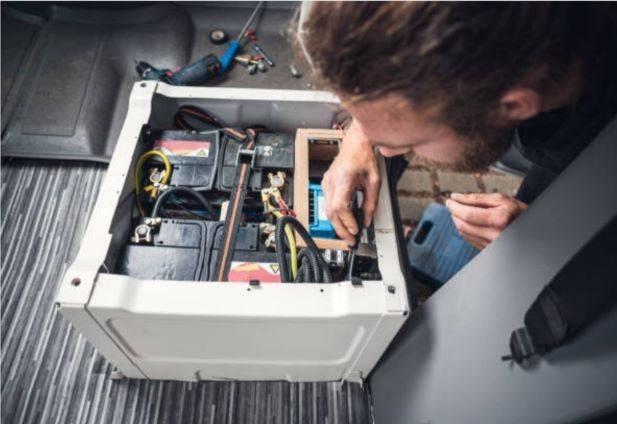Table of Contents
- Understanding the Types of Battery Damage and Their Implications
- Effective Techniques for Repairing Damaged Batteries at Home and Professional Levels
- Safe and Sustainable Methods for Recycling Batteries
- Best Practices for Extending Battery Life and Minimizing Environmental Impact
- Wrapping Up
Understanding the Types of Battery Damage and Their Implications
Battery damage manifests in several distinct forms, each with unique causes and consequences. Physical damage arises from impacts, punctures, or exposure to extreme pressure, often leading to internal short circuits or electrolyte leakage. Another common affliction is thermal damage, where batteries overheat due to overcharging, poor ventilation, or manufacturing defects, potentially causing swelling, venting, or even fires. Additionally, chemical degradation occurs over time as internal components deteriorate, reducing capacity and lifespan. Understanding these variations helps in determining whether a battery is suitable for repair or should be safely recycled.
Recognizing the type of damage is crucial because it directly influences your options. For instance, minor chemical degradation can sometimes be mitigated through controlled reconditioning processes, but physical or thermal damage usually compromises safety and functionality beyond repair. Here are some key implications to keep in mind:
- Safety risks: Damaged batteries, particularly with swelling or leakage, pose fire and toxicity hazards if mishandled.
- Repair feasibility: Only non-structural or reversible damage should be considered for repair by professionals.
- Recycling necessity: Severely compromised batteries must be processed through certified recycling channels to recover valuable materials while preventing environmental harm.
Effective Techniques for Repairing Damaged Batteries at Home and Professional Levels
Repairing damaged batteries involves a delicate balance of safety, technical skill, and the right tools. At home, individuals can employ simple techniques such as desulfation, which involves applying a controlled electrical pulse to dissolve lead sulfate crystals that form on lead-acid battery plates. This method can sometimes restore capacity and extend battery life, especially for automotive batteries. Additionally, carefully checking and replacing corroded terminals or cleaning battery connections with a baking soda solution can improve performance without complex tools. However, it is crucial to follow safety precautions, wear protective gear, and avoid tampering with lithium-ion batteries, which can be hazardous if mishandled.
On a professional level, advanced diagnostic tools and equipment allow for a more comprehensive evaluation and repair process. Specialists utilize battery analyzers to test internal resistance, voltage, and capacity, pinpointing exact faults. Professional refurbishment often involves balancing cells in multi-cell batteries, replacing damaged cells, and performing controlled reconditioning cycles to maximize battery health. Moreover, professionals have access to specialized recycling processes that safely recover valuable materials like lithium, cobalt, and nickel from damaged or end-of-life batteries-an eco-friendly solution that reduces landfill waste while recapturing critical resources. Incorporating both repair and recycling strategies ensures a responsible approach to extending battery lifespans and minimizing environmental impact.
- Home Techniques: Desulfation, terminal cleaning, visual inspections
- Professional Services: Diagnostic testing, cell replacement, controlled reconditioning
- Recycling Benefits: Resource recovery, reduction of toxic waste, environmental protection
Safe and Sustainable Methods for Recycling Batteries
Proper disposal and recycling of batteries are crucial to minimize environmental harm and recover valuable materials. Safe methods prioritize handling batteries with care to prevent leaks, fires, or toxic exposure. Recycling centers often employ advanced processes such as hydrometallurgical and pyrometallurgical techniques to extract metals like lithium, cobalt, nickel, and lead. These processes not only reduce landfill waste but also cut down on the need for mining raw materials, contributing to a more sustainable cycle. Additionally, many recycling programs use closed-loop systems that ensure extracted materials are purified and reused in new batteries or other industries, significantly lowering the carbon footprint.
To ensure safety and sustainability at home or in community programs, follow key practices when preparing batteries for recycling:
- Store damaged or used batteries in non-conductive, leak-proof containers to reduce risk of short circuits and spills.
- Never mix battery types or throw them in regular trash, as this increases safety risks and complicates recycling efforts.
- Use designated drop-off points or mail-back programs dedicated to battery recycling, often supported by manufacturers or municipal services.
Best Practices for Extending Battery Life and Minimizing Environmental Impact
Maximizing your battery’s lifespan starts with adopting smart charging habits. Avoid letting your battery drain completely before recharging and try to keep the charge level between 20% and 80% to reduce stress on the cells. If possible, use a charger compatible with your device to ensure optimal power flow and prevent overheating. Additionally, minimizing exposure to extreme temperatures-both hot and cold-can significantly reduce wear and tear on your battery, boosting longevity.
When it comes to environmental responsibility, small lifestyle changes bring big benefits. Consider these practical tips:
- Disable unnecessary background apps to conserve power and reduce the frequency of charging cycles.
- Invest in protective cases to shield your device and battery from physical damage.
- Recycle old or damaged batteries through certified programs to keep toxic materials out of landfills and support circular economy initiatives.
Wrapping Up
In conclusion, while damaged batteries often pose safety risks and diminished performance, they are not necessarily destined for the landfill. Repairing batteries can be a technical and cautious process best left to professionals, especially for high-capacity or lithium-ion types. However, recycling remains the most effective and environmentally responsible way to handle damaged or end-of-life batteries. By properly recycling batteries, we can recover valuable materials, reduce environmental impact, and contribute to a more sustainable future. Always remember to handle damaged batteries with care and consult certified recycling programs or specialists to ensure safe and compliant disposal. Taking these steps not only protects your devices but also helps protect our planet.Check Our Other Blogs
- StunGun – Your Trusted Source for Stun Guns, Laws, and Self-Defense Tips
- PepperSprayLaws – Your Trusted Resource for Pepper Spray Information
- StunGunLaws – Your Trusted Guide to Stun Gun Legality and Safety





